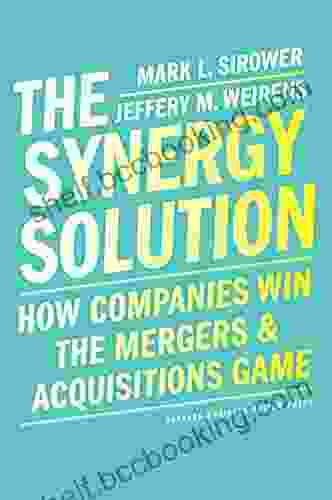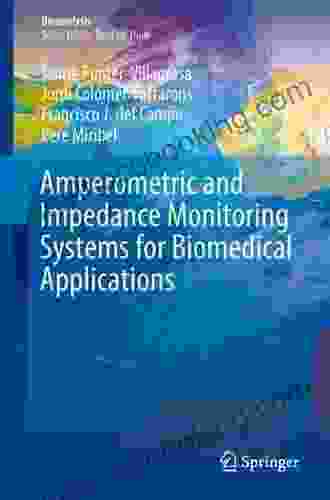Unlocking the Secrets of Biomedical Applications with Amperometric and Impedance Monitoring Systems

In the realm of medical advancements, amperometric and impedance monitoring systems have emerged as indispensable tools for non-invasive diagnostics and physiological monitoring. This article delves into the captivating world of these systems, exploring their principles, applications, and the remarkable insights they provide into human health.
Principles of Amperometric and Impedance Monitoring
### Amperometric Monitoring
4.6 out of 5
| Language | : | English |
| File size | : | 13879 KB |
| Text-to-Speech | : | Enabled |
| Screen Reader | : | Supported |
| Enhanced typesetting | : | Enabled |
| Print length | : | 250 pages |
Amperometric monitoring leverages the principle of electrochemistry to detect and measure analytes in biological samples. It employs an electrode system comprising a working electrode, a reference electrode, and a counter electrode. When a potential is applied between the working and reference electrodes, the analyte of interest undergoes an electrochemical reaction, resulting in the transfer of electrons. The resulting current flow is proportional to the concentration of the analyte.
### Impedance Monitoring
Impedance monitoring, on the other hand, analyzes the electrical properties of biological tissues to assess their physiological state. It applies a small alternating current to the tissue under investigation and measures the resulting voltage response. The impedance, calculated as the ratio of voltage to current, reflects the tissue's resistance, capacitance, and inductance. Changes in impedance can indicate alterations in tissue structure, composition, or function.
Applications in Biomedical Field
### Blood Glucose Monitoring
Amperometric monitoring has found widespread use in blood glucose monitoring devices for diabetic patients. It employs a sensor with an enzyme-coated working electrode that specifically reacts with glucose. The resulting current signal is directly proportional to the glucose concentration in the blood.
### Tissue Oxygen Monitoring
Impedance monitoring plays a critical role in tissue oxygen monitoring during surgical procedures. By measuring tissue impedance, surgeons can assess the oxygen saturation of the tissue and identify areas that may be experiencing ischemia or hypoperfusion.
### Cancer Diagnostics
Both amperometric and impedance monitoring have shown promise in cancer diagnostics. Amperometric systems can detect cancer-specific biomarkers in body fluids, while impedance monitoring can differentiate between cancerous and non-cancerous tissues based on their electrical properties.
### Drug Development
These monitoring systems offer valuable tools for drug development. Amperometric monitoring can assess drug metabolism and efficacy, while impedance monitoring can provide insights into drug-induced tissue changes.
Benefits of Amperometric and Impedance Monitoring Systems
- Non-invasive nature, allowing for continuous monitoring without discomfort for the patient.
- High sensitivity and specificity, enabling accurate detection of analytes and changes in physiological parameters.
- Real-time monitoring capabilities, providing immediate feedback on patient status.
- Versatility in application, ranging from point-of-care diagnostics to intraoperative monitoring.
- Cost-effectiveness and portability, making them accessible for various healthcare settings.
Amperometric and impedance monitoring systems have revolutionized the field of biomedical applications, providing invaluable insights into human health and enabling advancements in diagnostics, monitoring, and treatment. As research continues to uncover their full potential, these systems will undoubtedly continue to play an increasingly significant role in healthcare, empowering clinicians to make informed decisions and improve patient outcomes.
If you seek a comprehensive exploration of these fascinating technologies, we highly recommend the captivating book "Amperometric and Impedance Monitoring Systems for Biomedical Applications." This authoritative work delves into the principles, techniques, and applications of these systems, offering a profound understanding of their transformative impact on healthcare. With its engaging narrative and comprehensive insights, this book is an indispensable resource for biomedical researchers, clinicians, and anyone seeking to unlock the secrets of these extraordinary monitoring tools.
4.6 out of 5
| Language | : | English |
| File size | : | 13879 KB |
| Text-to-Speech | : | Enabled |
| Screen Reader | : | Supported |
| Enhanced typesetting | : | Enabled |
| Print length | : | 250 pages |
Do you want to contribute by writing guest posts on this blog?
Please contact us and send us a resume of previous articles that you have written.
 Book
Book Novel
Novel Page
Page Chapter
Chapter Text
Text Story
Story Genre
Genre Reader
Reader Library
Library Paperback
Paperback E-book
E-book Magazine
Magazine Newspaper
Newspaper Paragraph
Paragraph Sentence
Sentence Bookmark
Bookmark Shelf
Shelf Glossary
Glossary Bibliography
Bibliography Foreword
Foreword Preface
Preface Synopsis
Synopsis Annotation
Annotation Footnote
Footnote Manuscript
Manuscript Scroll
Scroll Codex
Codex Tome
Tome Bestseller
Bestseller Classics
Classics Library card
Library card Narrative
Narrative Biography
Biography Autobiography
Autobiography Memoir
Memoir Reference
Reference Encyclopedia
Encyclopedia Jason Borte
Jason Borte Lou Del Bianco
Lou Del Bianco Jason Anspach
Jason Anspach Tim Sullivan
Tim Sullivan Tahmina Watson
Tahmina Watson Jane Evans
Jane Evans Jason Korol
Jason Korol Reed Mangels
Reed Mangels Paul Graham
Paul Graham Jeff Henigson
Jeff Henigson Jeanette Hollifield
Jeanette Hollifield Janice Tingum
Janice Tingum Janice N Harrington
Janice N Harrington Jean Ginzburg
Jean Ginzburg Janice Celeste
Janice Celeste Patricia O Quinn
Patricia O Quinn W M Raebeck
W M Raebeck Mark Christopher Weber
Mark Christopher Weber L A Starks
L A Starks Jason Diamond
Jason Diamond
Light bulbAdvertise smarter! Our strategic ad space ensures maximum exposure. Reserve your spot today!

 Herman MelvilleUnveiling the Enchanting Realm of Blood In The Aether: Doctor Strange 2024
Herman MelvilleUnveiling the Enchanting Realm of Blood In The Aether: Doctor Strange 2024
 Braeden HayesUnravel the Enigmatic "Better Man": A Literary Odyssey with Chief Inspector...
Braeden HayesUnravel the Enigmatic "Better Man": A Literary Odyssey with Chief Inspector... Ken SimmonsFollow ·4.2k
Ken SimmonsFollow ·4.2k José SaramagoFollow ·14.9k
José SaramagoFollow ·14.9k Carlos FuentesFollow ·11.1k
Carlos FuentesFollow ·11.1k Roald DahlFollow ·17.6k
Roald DahlFollow ·17.6k Patrick HayesFollow ·11.6k
Patrick HayesFollow ·11.6k Brett SimmonsFollow ·16.3k
Brett SimmonsFollow ·16.3k Gregory WoodsFollow ·10.4k
Gregory WoodsFollow ·10.4k Emanuel BellFollow ·3.5k
Emanuel BellFollow ·3.5k

 Carlos Drummond
Carlos DrummondHow Companies Win the Mergers and Acquisitions Game:...
In today's...

 Craig Blair
Craig BlairMastering The Delicate Balance Between Power And Peace
In today's ever-evolving world, the interplay...

 Wade Cox
Wade CoxUnveiling the Zen of Golf: A Journey to Inner Mastery
: The Harmony of Mind,...

 Gerald Bell
Gerald BellDarkness Triumphant: Three of the Catmage Chronicles
Synopsis ...

 Henry James
Henry JamesDarkness Rising: One of the Catmage Chronicles
A Captivating Fantasy Adventure...
4.6 out of 5
| Language | : | English |
| File size | : | 13879 KB |
| Text-to-Speech | : | Enabled |
| Screen Reader | : | Supported |
| Enhanced typesetting | : | Enabled |
| Print length | : | 250 pages |










